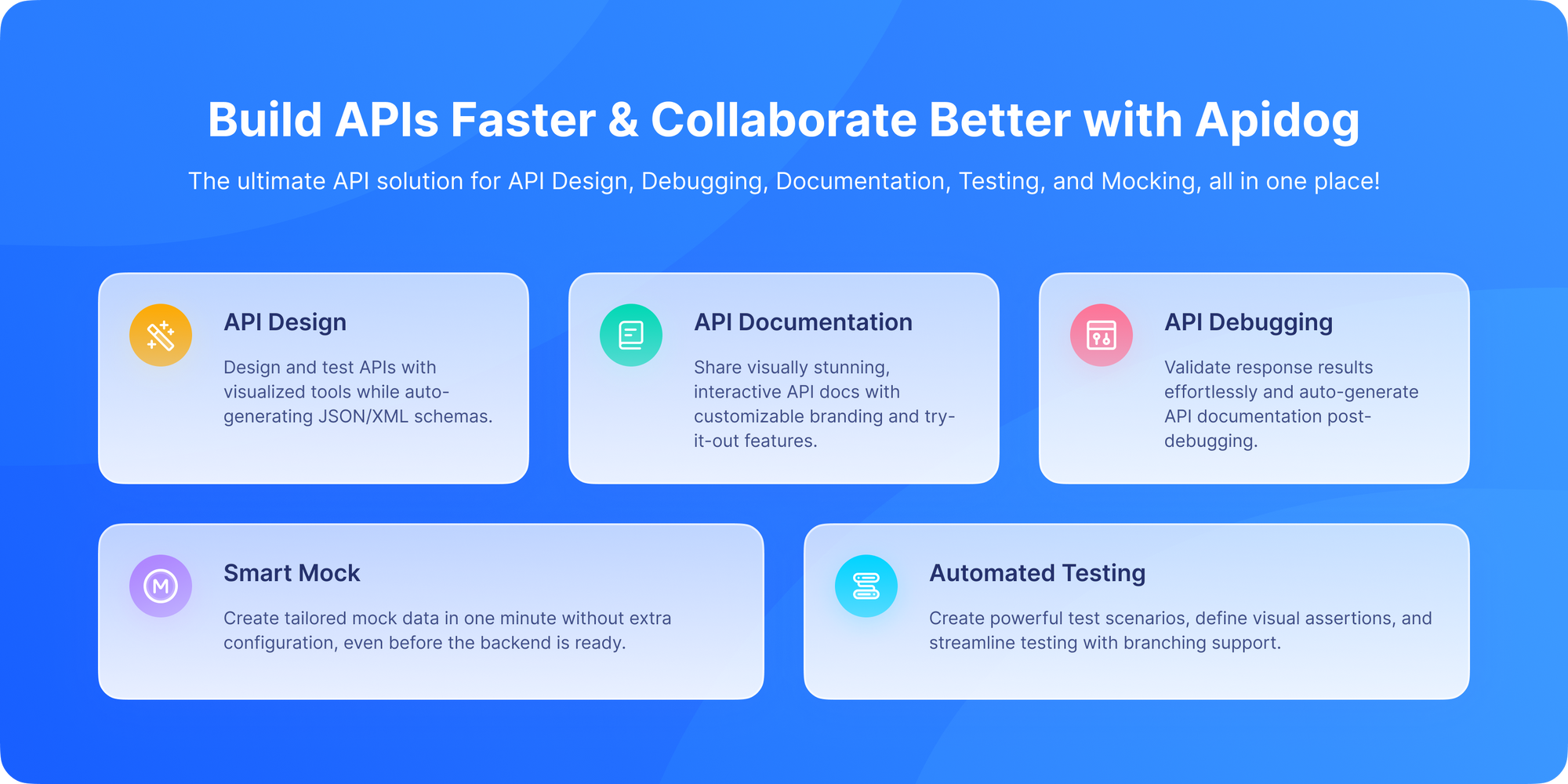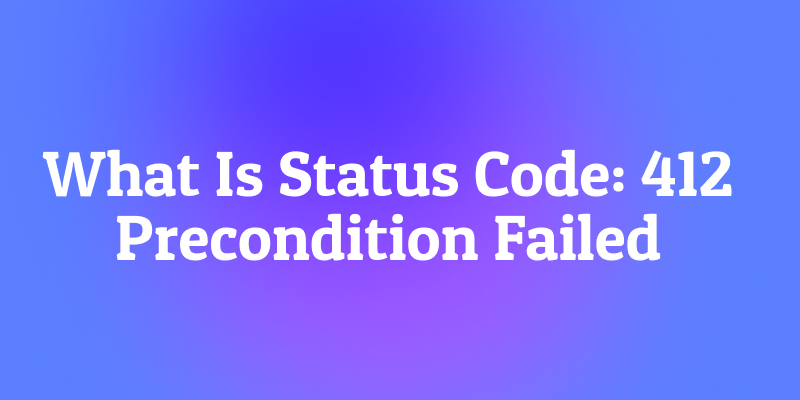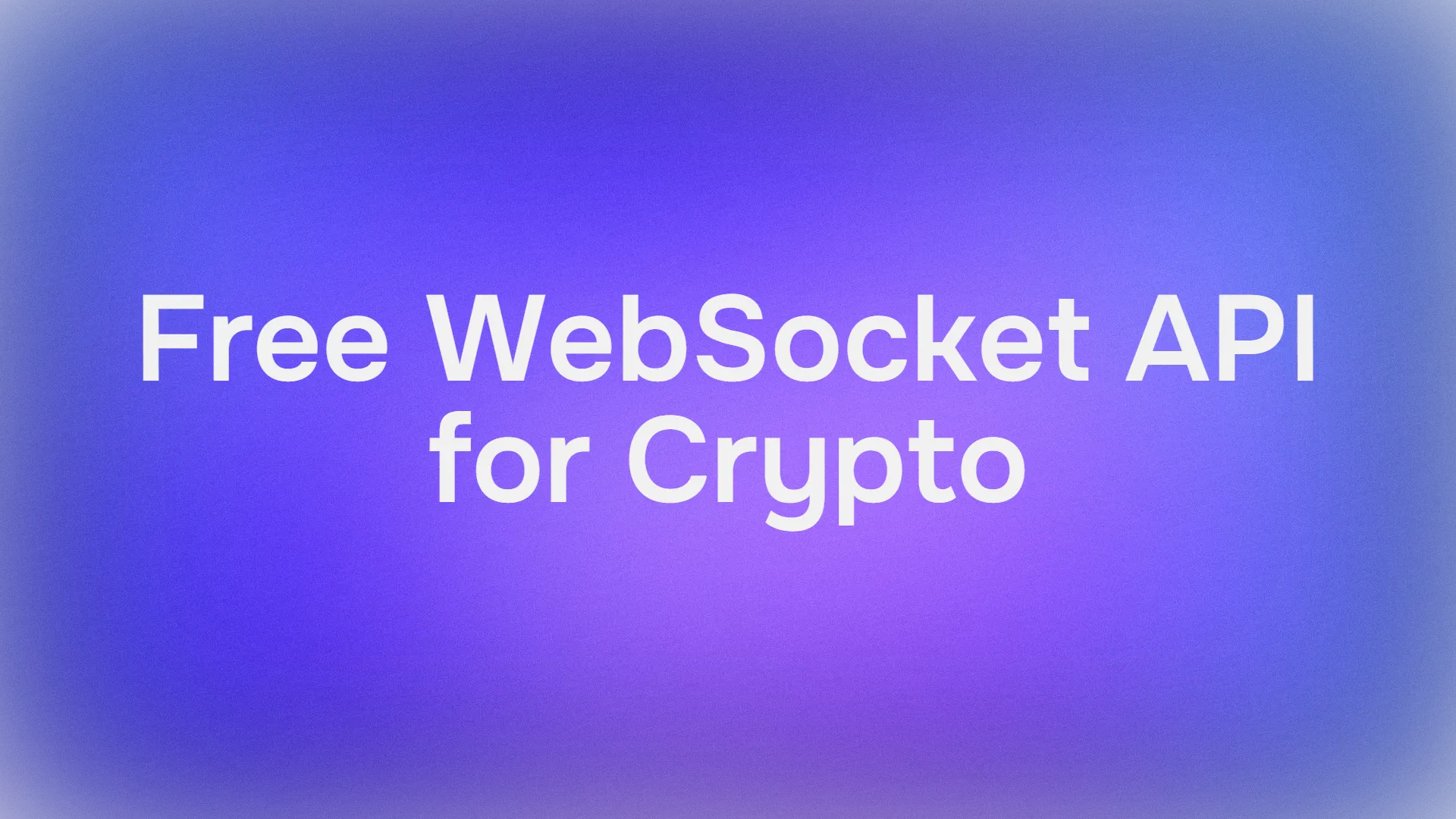Have you ever hit an unexpected wall while working with an API and seen something like this?
HTTP/1.1 412 Precondition Failed
Content-Type: application/jsonIf you have, you're not alone. The 412 Precondition Failed status code is one of those lesser-known HTTP responses that can leave even experienced developers scratching their heads. That sounds serious! "precondition failed"? What precondition? Where did I go wrong?
Don't worry! we're going to break it all down in plain English. By the end of this post, you'll fully understand what the HTTP 412 status code means, what causes it, how to fix it, and how to avoid it in your APIs and web applications.
412 Precondition Failed, Apidog is your best friend. It's a free, all-in-one API platform that lets you design, mock, test, debug and document APIs in a visual environment. You can easily simulate conditional requests, add headers like If-Match or If-Unmodified-Since, and see exactly how servers respond perfect for understanding how preconditions work!Now, let's explore how HTTP 412 Precondition Failed prevents digital collisions and maintains data integrity.
The Problem: The Dangers of Blind Updates
To understand why 412 exists, let's first examine the problem it solves. Consider a simple API for updating user profiles:
The Dangerous Scenario:
- User A fetches user profile 123:
GET /users/123→ Returns user data with email "alice@old.com" - User B fetches the same user profile:
GET /users/123→ Also gets email "alice@old.com" - User A updates the email:
PUT /users/123with{"email": "alice@new.com"} - User B updates the phone number:
PUT /users/123with{"phone": "+1234567890"}(but still using the old email in their mental model) - Result: The user's email gets reset to "alice@old.com" because User B's update was based on stale data!
This is called a "lost update" problem, and it's exactly what 412 Precondition Failed helps prevent.
What Is HTTP Status Code 412 Precondition Failed?
The 412 Precondition Failed status code signals that the server evaluated one or more conditions specified by the client in the request headers and found that these conditions were not met. Because these preconditions weren't satisfied, the server refuses to process the request further.
Put simply: the client told the server, "Only perform this operation if condition X holds true," but condition X failed, so the server sent back a 412 response.
This mechanism safeguards against unintended overwrites or inconsistent data modifications.
The Technical Definition (RFC 7232)
The official definition from RFC 7232 (HTTP Conditional Requests) states:
"The 412 (Precondition Failed) status code indicates that one or more conditions given in the request header fields evaluated to false when tested on the server."
In other words, your request contained one or more conditional headers (like If-Match, If-Unmodified-Since, or If-None-Match), and the server evaluated those conditions to determine whether it could safely proceed. When they fail, you get a 412 response.
The Magic of ETags: The Resource Fingerprint
To understand how 412 works, we need to understand ETags. An ETag (Entity Tag) is a unique identifier for a specific version of a resource. It's like a fingerprint that changes whenever the resource changes.
When you request a resource, the server often includes an ETag in the response headers:
HTTP/1.1 200 OKContent-Type: application/jsonETag: "v1-a1b2c3d4e5f6"
{
"id": 123,
"name": "Alice",
"email": "alice@example.com"
}
This ETag represents the current state of the resource. If any field changes, the ETag should change too.
What Are Preconditions in HTTP Requests?
Preconditions allow clients to specify requirements or constraints on how servers should process requests. They are primarily conveyed via headers in the HTTP request, such as:
| Header | Purpose | 412 Trigger Example |
|---|---|---|
If-Match |
Proceed only if the resource matches the given ETag. | The ETag no longer matches. |
If-Unmodified-Since |
Proceed only if the resource hasn’t changed since the specified date. | The resource was modified after the given date. |
If-None-Match |
Proceed only if the resource doesn’t match the given ETag. | The ETag does match (resource exists). |
If-Modified-Since |
Proceed only if the resource has been modified since the given date. | The resource hasn’t been modified since then. |
So, if your request includes one of these headers and the condition fails, the server responds with 412 Precondition Failed. Using these headers, clients can implement conditional requests for example, checking that they are updating the latest version of a resource.
How Does 412 Fit Into Conditional Requests?
If a client sends a request with any of the precondition headers and those conditions are not met by the server’s current resource state, the server responds with 412 Precondition Failed.
For instance, a client might try to update a document only if the server’s copy hasn't changed since the last retrieval (using If-Match). If the server detects the document has changed, it responds with 412 to prevent accidental overwrites.
This helps avoid the classic lost update problem in concurrent or distributed systems.
Why Is 412 Important?
- Prevents data corruption by ensuring operations occur only when specific criteria are satisfied.
- Supports optimistic concurrency control, where clients act on potentially stale data but verify conditions before applying changes.
- Enables efficient caching and update mechanisms by checking resource freshness.
All these features make 412 critical for robust and safe RESTful APIs.
Why the 412 Precondition Failed Exists
At first, this might seem like an unnecessary complication. But the 412 status code actually plays a huge role in data integrity and concurrency control.
Here’s why it's so important:
1. Prevents Overwriting New Data
It ensures that a client doesn’t accidentally overwrite a resource that has been updated by someone else.
2. Optimizes Bandwidth
By checking preconditions, clients and servers avoid sending large payloads or making unnecessary updates.
3. Improves API Reliability
412 is an elegant way to prevent race conditions and conflicting updates in REST APIs.
Example: How a 412 Precondition Failed Happens
Let’s say you have a blog API. You’re updating a post using a PUT request, but you only want to update it if the post hasn’t changed since you last fetched it.
Your request might look like this:
PUT /api/posts/123 HTTP/1.1
Host: example.com
If-Unmodified-Since: Wed, 02 Oct 2024 12:00:00 GMT
Content-Type: application/json
{
"title": "Understanding HTTP 412 Errors"
}
If the post was modified after that date (maybe another user edited it), the server will respond:
HTTP/1.1 412 Precondition Failed
Content-Type: application/json
{
"error": "Resource has been modified since specified date."
}
That’s the server saying, “Sorry, your condition doesn’t hold true anymore.”
Real-World Scenarios That Cause 412 Precondition Failed
Let’s explore some practical examples where this error might appear.
1. Optimistic Concurrency Control
Many APIs use ETags to prevent conflicting updates.
For instance:
PUT /api/users/1 HTTP/1.1
If-Match: "abc123"
Content-Type: application/json
If the server’s current ETag for that resource is "xyz456", it means the data has changed since you last retrieved it and you’ll get a 412 Precondition Failed.
2. Conditional DELETE Request
You can even use preconditions with DELETE requests:
DELETE /api/posts/999 HTTP/1.1
If-Unmodified-Since: Mon, 07 Oct 2024 10:00:00 GMT
If the post was updated after that date, the delete operation won’t happen, and the server will respond with 412.
This prevents deleting something that’s been modified since you last saw it.
3. Cache Validation Gone Wrong
Sometimes, a caching system (like a CDN or proxy) sends a conditional request using If-None-Match or If-Modified-Since. If those conditions fail validation, you’ll see a 412 response.
4. Client-Side Bugs
Sometimes developers manually add headers without realizing how they affect conditional logic. If your client sets incorrect timestamps or ETags, you can unintentionally trigger 412 errors.
Real-World Use Cases
1. Collaborative Editing Tools
Google Docs, Figma, and other real-time collaboration tools use similar concepts to 412 (though they often use operational transforms or CRDTs for real-time sync). The principle is the same: prevent users from overwriting each other's work.
2. E-commerce Inventory Systems
When multiple users are trying to purchase the last item in stock, conditional requests can ensure that inventory counts don't go negative.
3. API-Driven Databases
Many modern APIs use 412 to provide optimistic concurrency control, preventing the "lost update" problem we discussed earlier.
4. File Upload Services
When resuming interrupted uploads, If-Match headers can ensure you're continuing from the correct version of a partially uploaded file.
How Should Clients Handle 412 Responses?
Clients should:
- Interpret the 412 as a signal that the precondition failed.
- Fetch the latest resource state.
- Merge or modify data carefully.
- Retry the request with updated preconditions or inform the user.
This preserves data integrity and user trust.
Common Headers Leading to 412 Precondition Failed
If-Match: Requires the resource's ETag to match one specified.If-Unmodified-Since: Only proceed if the resource hasn’t changed since the given date.
Use these headers thoughtfully to ensure safe resource modifications.
How Should Developers Implement Support for 412?
- Verify all conditional headers on incoming requests.
- Validate resource state against preconditions before executing modifying operations.
- Return precise and informative 412 responses.
- Provide response bodies or headers indicating current resource versions (for example, ETag).
- Encourage client use of precondition headers in API docs.
- Use tools like Apidog to test conditional requests and verify 412 behavior.
Testing 412 Precondition Failed with Apidog

Headers like If-Match and If-Unmodified-Since can get complicated especially when APIs evolve. Testing conditional requests and 412 responses is crucial for building robust applications. That's where Apidog simplifies everything. Apidog lets you craft requests with conditional headers easily:
- Capture ETags Automatically: Send a GET request to a resource, and Apidog will parse and store the ETag from the response headers.
- Reuse ETags in Subsequent Requests: Easily reference the captured ETag in your PUT/PATCH requests using Apidog's environment variable system.
- Simulate Conflicts: Create test scenarios where you intentionally use stale ETags to verify that your server correctly returns
412 Precondition Failed. - Test Recovery Flows: After receiving a
412, test that your client correctly handles it by fetching the latest version and retrying the update. - Automate Conditional Testing: Create test suites that automatically verify your API's conditional request behavior remains consistent across deployments.
This level of testing ensures that your concurrent update logic works correctly and prevents data corruption in production. It's like having Postman, Swagger, and a version-control-aware API tester all in one place. Download Apidog for free and make testing conditional HTTP logic straightforward.
Best Practices for Handling 412 Errors
For Server Developers:
- Always include the current ETag in
412responses so clients know what the current version is. - Provide helpful error messages that guide clients on how to recover.
- Use strong ETags that actually change when the resource changes (don't use weak ETags that might not detect all changes).
For Client Developers:
- Always check for
412responses when making conditional requests. - Implement automatic retry logic: When you get a
412, fetch the latest version, reconcile any changes, and retry the update. - Show helpful UI messages: Don't just show "Error 412" to users. Explain that someone else made changes and guide them through resolving the conflict.
412 Precondition Failed in RESTful API Design
In REST APIs, 412 plays a fundamental role in optimistic concurrency control by enabling safe updates:
- Clients store ETags from resource retrieval.
- Include
If-Matchin update requests. - Server validates ETag matches current version.
- If versions differ, return 412.
This pattern prevents overwriting changes made by other clients.
Troubleshooting Tips
- Confirm clients send appropriate precondition headers.
- Check server’s resource state management and ETag generation.
- Use Apidog to replicate and diagnose 412 errors.
- Inspect logs for repeated failures.
- Educate API users about precondition usage.
Conclusion: The Guardian of Data Integrity
The HTTP 412 Precondition Failed status code might seem frustrating at first, but it's actually one of the most useful tools in your HTTP toolkit. HTTP 412 Precondition Failed is a powerful but underappreciated status code that helps preserve data integrity through conditional requests. By signaling unmet preconditions, it prevents lost updates and encourages better client-server synchronization. It ensures your API maintains data consistency, integrity, and safe concurrency especially when multiple users or services are modifying the same data.
Understanding and properly implementing 412 Precondition Failed is a mark of a mature API design. It shows that you've considered the real-world scenarios where multiple users interact with the same data and have built safeguards to maintain data integrity.
Apidog provides an intuitive interface to test, debug, and document your APIs, helping you deliver robust web services. So the next time you're building an update endpoint, consider adding conditional request support. And when you need to test that your implementation works correctly, a tool like Apidog will give you the precision and control needed to ensure your optimistic locking mechanism is both safe and reliable. To experiment with and master HTTP status codes like 412, download Apidog for free.



